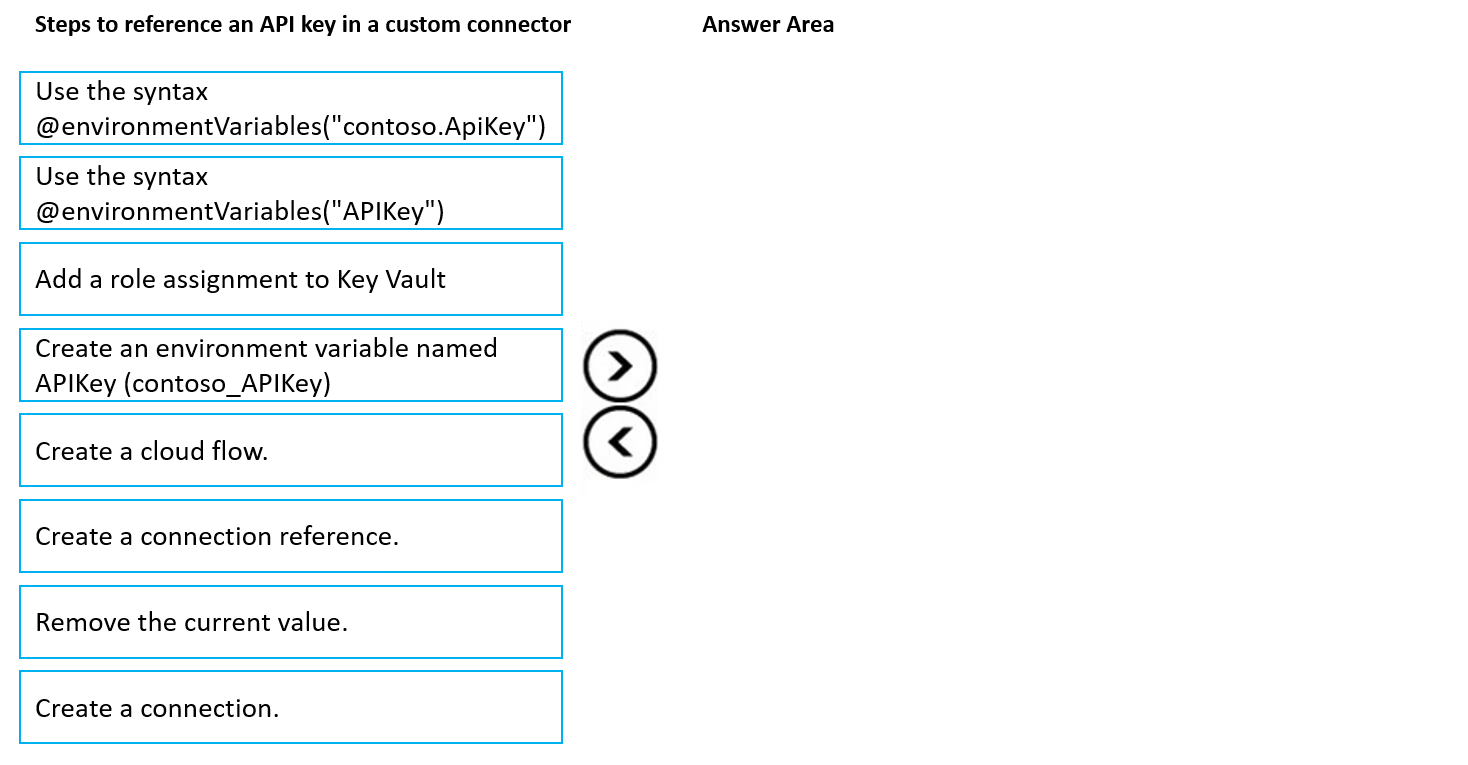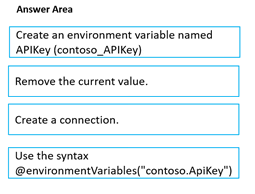DRAG DROP
-
You are designing a custom connector for an internal API used by Contoso, LLC.
Authentication to the API is carried out by using an API key. The API key is stored within Azure Key Vault. Each environment has a separate instance of the API with a different API key.
You need to reference the API key from Key Vault in the custom connector.
Which four actions should you perform in sequence? To answer, move the appropriate actions from the list of actions to the answer area and arrange them in the correct order.
NOTE: More than one order of answer choices is correct. You will receive credit for any of the correct orders you select.

